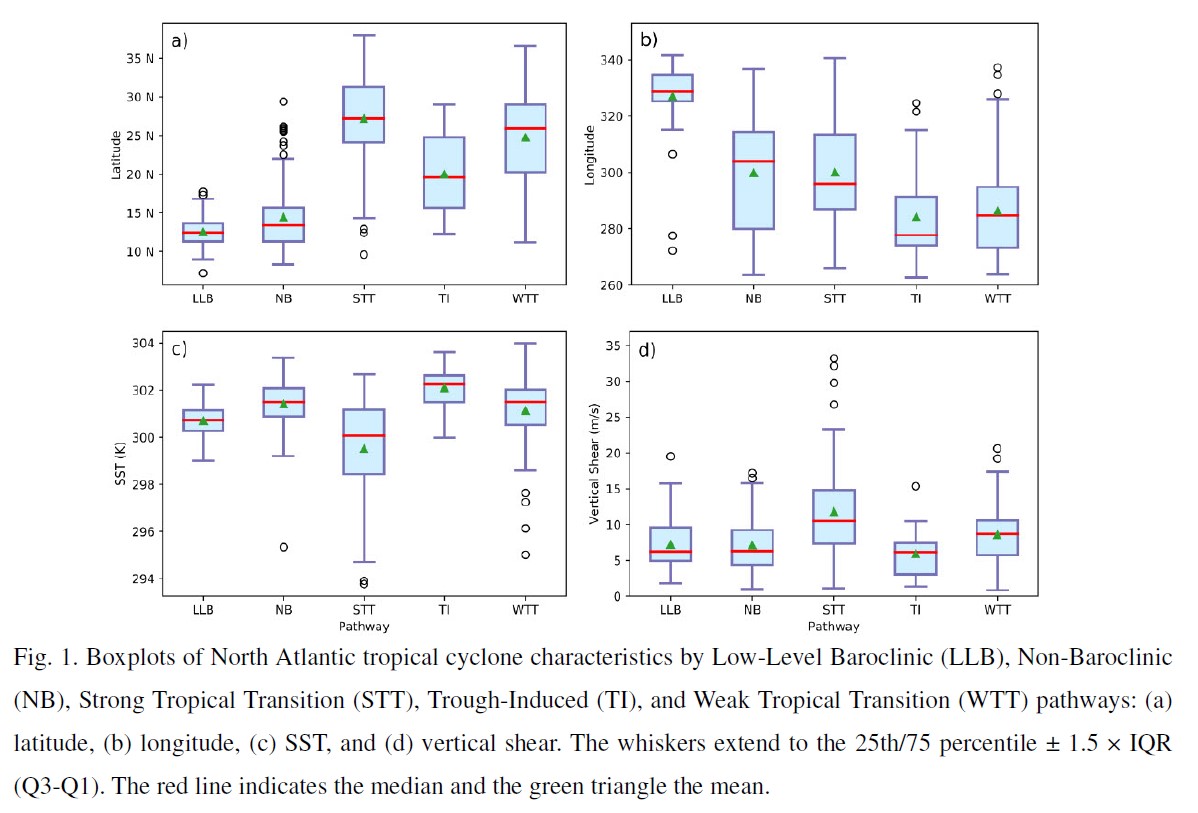Graphical Abstract
Datt, I., S. J. Camargo, A. H. Sobel, R. McTaggart-Cowan, Z. Wang, 2022: An Investigation of Tropical Cyclone Development Pathways as an Indicator of Extratropical Transition. J. Meteor. Soc. Japan, 100, 707-724.
https://doi.org/10.2151/jmsj.2022-037
Graphical Abstract
Plain Language Summary: This study investigates whether tropical cyclones that follow certain tropical cyclogenesis “pathways” in baroclinic environments are more likely to undergo extratropical transition than those that develop in non-baroclinic environments. The relationships between extratropical transition and two of the pathways investigated --- namely the strong tropical transition and trough-induced pathways --- are statistically significant in the North Atlantic and Western North Pacific, respectively. After controlling for genesis latitude and other environmental factors, the relationships remain statistically significant, implying that the specific mechanism of tropical cyclogenesis has a lasting effect on the probability of an eventual extratropical transition.
Highlights:
- In the North Atlantic basin, 79.5% of storms in the Strong Tropical Transition pathway undergo extratropical transition, while in the Western North Pacific basin, 55.3% of storms in the Trough Induced pathway undergo extratropical transition. Both are statistically significantly distinct from all other pathways at confidence levels above 95%.
- The results suggest that some tropical cyclones “remember” how they formed. However, the mechanism of such memory remains a question for future research.







